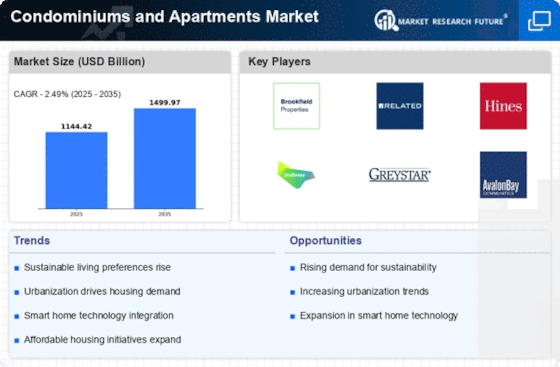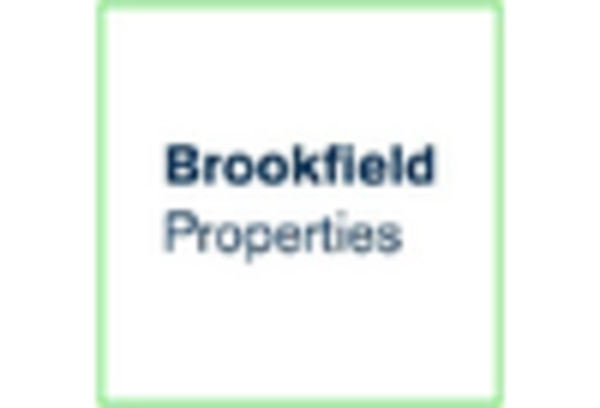Government Policies and Incentives
Government policies and incentives play a crucial role in shaping the Condominiums and Apartments Market. Various initiatives aimed at promoting affordable housing development, such as tax credits and zoning reforms, encourage builders to invest in multifamily projects. For example, some regions have implemented density bonuses, allowing developers to construct more units in exchange for including affordable housing options. These policies not only stimulate construction activity but also address housing shortages in urban areas. Furthermore, government-backed financing programs can lower borrowing costs for developers, making it more feasible to undertake new projects. As policymakers continue to prioritize housing affordability, the Condominiums and Apartments Market is likely to benefit from increased investment and development opportunities.
Rising Demand for Affordable Housing
The increasing demand for affordable housing options is a prominent driver in the Condominiums and Apartments Market. As urban populations swell, many individuals and families seek cost-effective living solutions. According to recent data, approximately 30 percent of households are classified as cost-burdened, spending more than 30 percent of their income on housing. This trend has prompted developers to focus on creating affordable condominiums and apartments, which cater to a diverse demographic. The need for affordable housing is likely to persist, as economic pressures continue to affect housing accessibility. Consequently, the Condominiums and Apartments Market is adapting to meet this demand, potentially leading to innovative designs and financing options that prioritize affordability.
Technological Advancements in Construction
Technological advancements in construction methods and materials are reshaping the Condominiums and Apartments Market. Innovations such as modular construction and 3D printing are streamlining the building process, reducing costs, and enhancing efficiency. For instance, the use of prefabricated components can decrease construction time by up to 50 percent, allowing developers to respond swiftly to market demands. Furthermore, smart home technologies are increasingly integrated into new developments, appealing to tech-savvy consumers. These advancements not only improve the quality of living spaces but also contribute to sustainability efforts by minimizing waste. As technology continues to evolve, the Condominiums and Apartments Market is likely to witness a transformation in how residential spaces are designed and constructed.
Sustainability and Energy Efficiency Trends
Sustainability and energy efficiency trends are increasingly influencing the Condominiums and Apartments Market. As environmental awareness grows, consumers are seeking residences that align with their values, prompting developers to incorporate eco-friendly features. Data suggests that properties with energy-efficient designs can command higher rental prices, with some studies indicating a premium of up to 20 percent. This trend is driving the adoption of green building certifications, such as LEED, which not only enhance property value but also reduce operational costs for residents. Additionally, the integration of renewable energy sources, such as solar panels, is becoming more common in new developments. As sustainability becomes a priority for both consumers and investors, the Condominiums and Apartments Market is likely to evolve, focusing on environmentally responsible practices.
Changing Demographics and Lifestyle Preferences
Shifting demographics and evolving lifestyle preferences are significant factors influencing the Condominiums and Apartments Market. Younger generations, particularly millennials and Gen Z, are increasingly prioritizing urban living, convenience, and access to amenities. This demographic shift has led to a rise in demand for condominiums and apartments that offer proximity to work, entertainment, and public transportation. Data indicates that urban areas are experiencing a population increase of around 1.5 percent annually, further driving the need for multifamily housing solutions. Additionally, the trend towards remote work has altered housing preferences, with many individuals seeking larger living spaces that accommodate home offices. As these lifestyle changes continue to unfold, the Condominiums and Apartments Market must adapt to meet the evolving needs of consumers.

















Leave a Comment